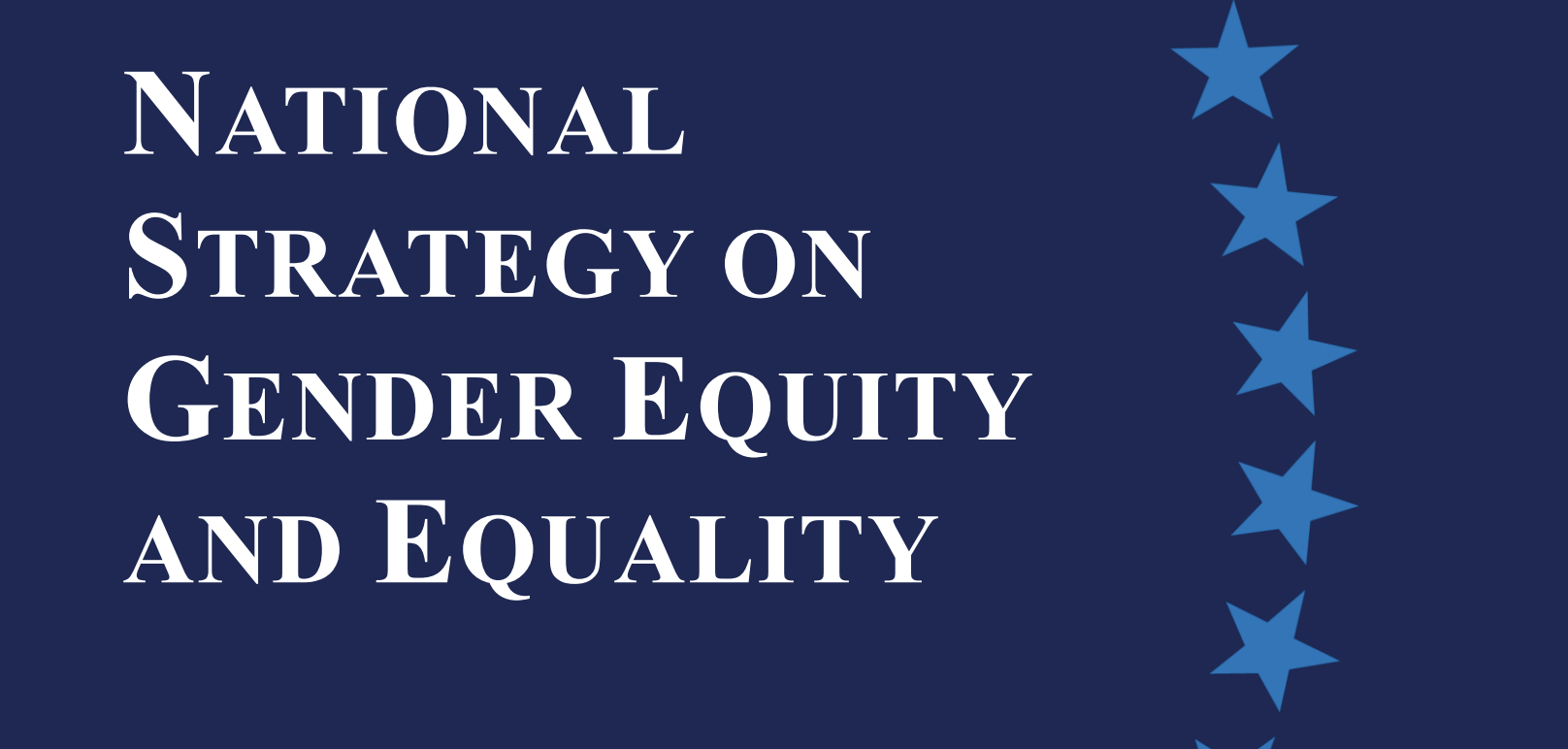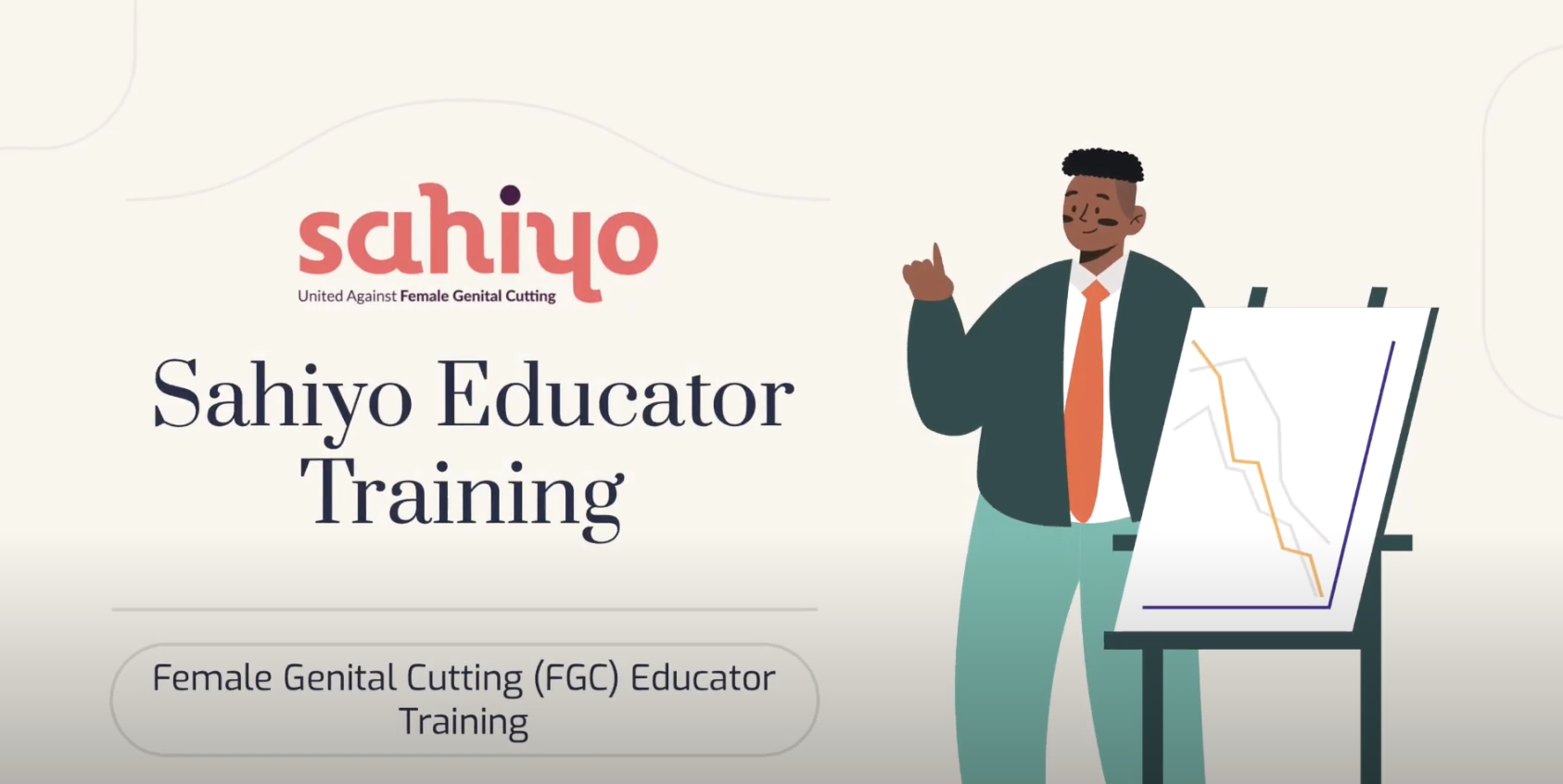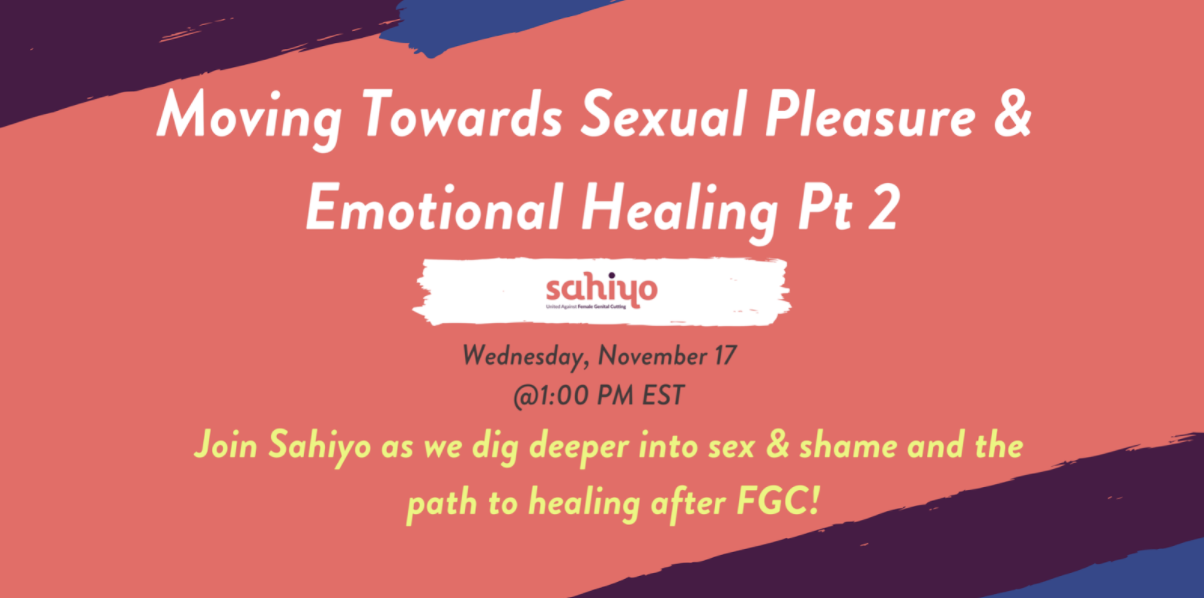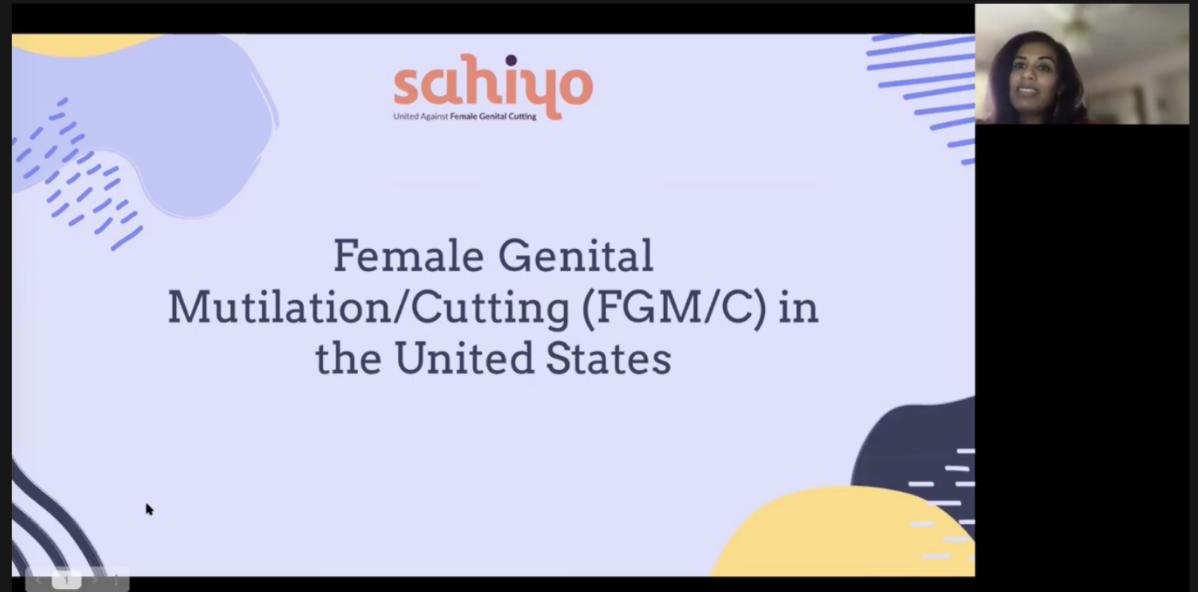By Beth Fotheringham
On the 16th of September, the FAWCO Target Team collaborated with Sahiyo for an educational webinar about FGM/C in the United States. The webinar sought to highlight the essential work Sahiyo does in their work to end FGC and support survivors.
At the start of the webinar, Sahiyo co-founder and U.S. Executive Director Mariya Taher provided context with her own expertise on both ‘khatna’ and the Dawoodi Bohras, a community that partakes in the harmful practice of FGM/C. Through her own journey of speaking out as a survivor, she recognised the need for an organised forum within practicing communities, as well as the individual and collective benefits of creating positive social change through empowerment. It was evident that this had informed Sahiyo’s own unique approach to supporting survivors and raising awareness, which centres on storytelling.
Mariya proceeded to clarify the various terminologies used in talking about female genital cutting (FGC), as well as the different types of the practice; she deftly outlined why Sahiyo uses ‘cutting’ instead of ‘mutilation,’ while respecting the right of survivors to choose how to define and describe their own experiences.
She unflinchingly laid out the fact that 500,000+ women and girls are estimated to be living with, or at risk of, FGM/C in the US. This was especially shocking for me to learn, due to so much of the discourse surrounding FGC focusing on cases in Africa or “developing” countries, and evidence of such practices being greatly underreported in the Western world. This figure was made even more impactful when Mariya further deconstructed the statistic. She posited that this is most likely an under-representation, as it does not include any diasporic communities from countries not included within the 32 countries studied by UNICEF.
For example, the Bohra community, who do practice FGC, are not counted in this statistic, nor are most other Asian countries where evidence of FGC exists. The most recent study into FGC prevalence found evidence of FGC in 92 countries worldwide, strongly suggesting that the statistic from the United States is a considerable underestimate. Through the webinar, we learned that there are current efforts within the US by the Center for Disease Control and Prevent (CDC) to capture more accurate data, which sounded promising, but that data collection is in its early stages.
In another part of the webinar, various survivor stories from the Voices to End FGC project were introduced. Renee Bergstrom’s story was particularly powerful in addressing and disrupting common misconceptions about where FGC takes place and to whom. Jenny’s story portrayed the devastating silence that upholds the practice happening generation after generation; Maryah Haidery’s story explored the various psychological consequences of FGC. All were both informative and inspiring.
Mariya also spoke on the legal context of FGC in the United States, explaining and analysing the current federal legislation, while applying it to real legal cases. This was especially helpful to understand — as someone who lives outside of the US I find the state/federal separation particularly confusing — and it became much clearer how abuses of human rights, such as FGC, are able to slip through the gaps of the law.
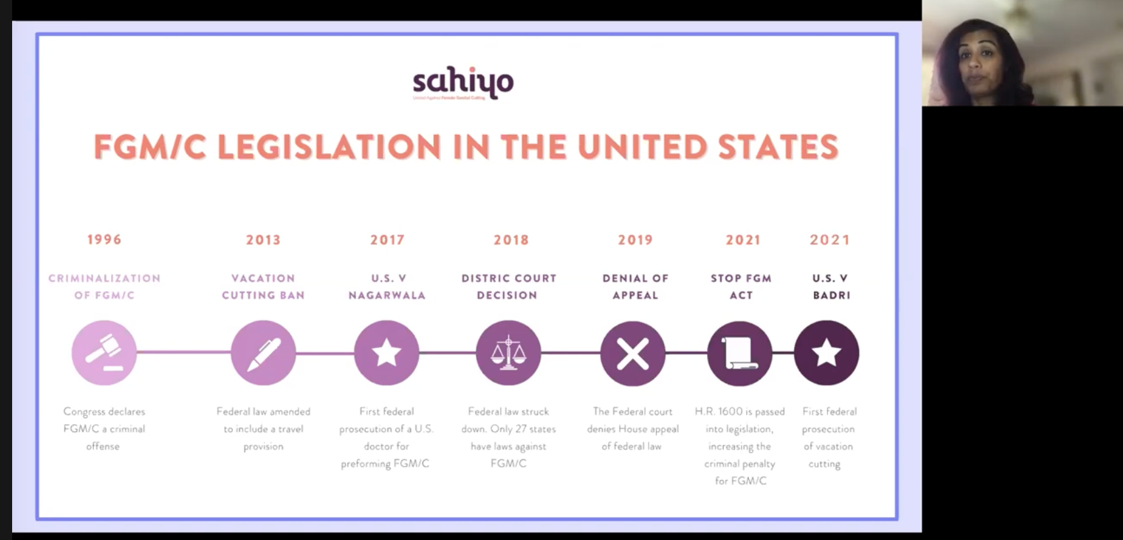
After watching the webinar, I found it indisputably apparent that there are neither sufficient federal nor state laws to effectively uphold the work against FGC in the United States, and absolutely appalling that not even every state has legislation against the practice (with only 6/7 states having comprehensive laws against FGC). Though I understand that criminalisation of FGC is by no means the only, or most effective, way of ending the practice, I think it is important in taking a clear (and sometimes symbolic) stance against FGC with coherent legislation that automatically supports the work of activists and survivors to stop FGC in different countries. Alongside this, it also helps families who are doubtful of the benefits of FGC for their daughters have a legitimate reason not to carry out the procedure while not having to outright stand against the rules of their cultures and communities.
I found it especially inspiring to hear from Mariya how Sahiyo’s work has been instrumental in passing state laws; most recently, and successfully, in Massachusetts. Sahiyo is now engaged in similar work to pass a state law in Connecticut, one of the ten remaining states without any legal protections against FGC whatsoever. I think focusing on the progress that has been made definitely provides effective encouragement to keep working for change.
It was similarly uplifting to learn that the Voices Projects have resulted in survivors feeling a sense of empowerment and a surge of desire for collective action, as well as experiencing a strong sense of comradery with other storytellers. This embodies what inspires and impresses me most about Sahiyo: not only are they doing crucial work to end FGC and stop future generations of girls, women and others from having to undergo the practice, but they also have an important focus on supporting those that have already been through it. Listening to the stories of these survivors conveys clearly how successful this parallelled approach is.
Interestingly, in Sahiyo’s study of 400 Dawoodi Bohra women, which found that 80% of the women had been cut, 81% also said that they didn’t want the practice to continue into the next generation. FGC is a social norm that has been justified, with silence being a key part of why it has continued. I now understand how telling these stories breaks the silence and takes the conversation out of hidden, private spheres and into the public one. Mariya spoke of particularly relevant research that found when it comes to social norms and culture change, if 25% of a community changes or adopts a new norm, then it becomes wide scale enough for permanent change to occur.
Mariya concluded her talk by discussing Sahiyo’s various other programs, such as Thaal Pe Charcha, Bhaiyo, Sahiyo Activist Retreat, and Community Education and Outreach, all of which have had substantial success in supporting FGC survivors and raising awareness. It was clear by the end of the webinar how essential the services Sahiyo provide are to survivors alongside the wider communities, and what an integral role they play in worldwide efforts to stop FGC.

